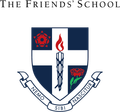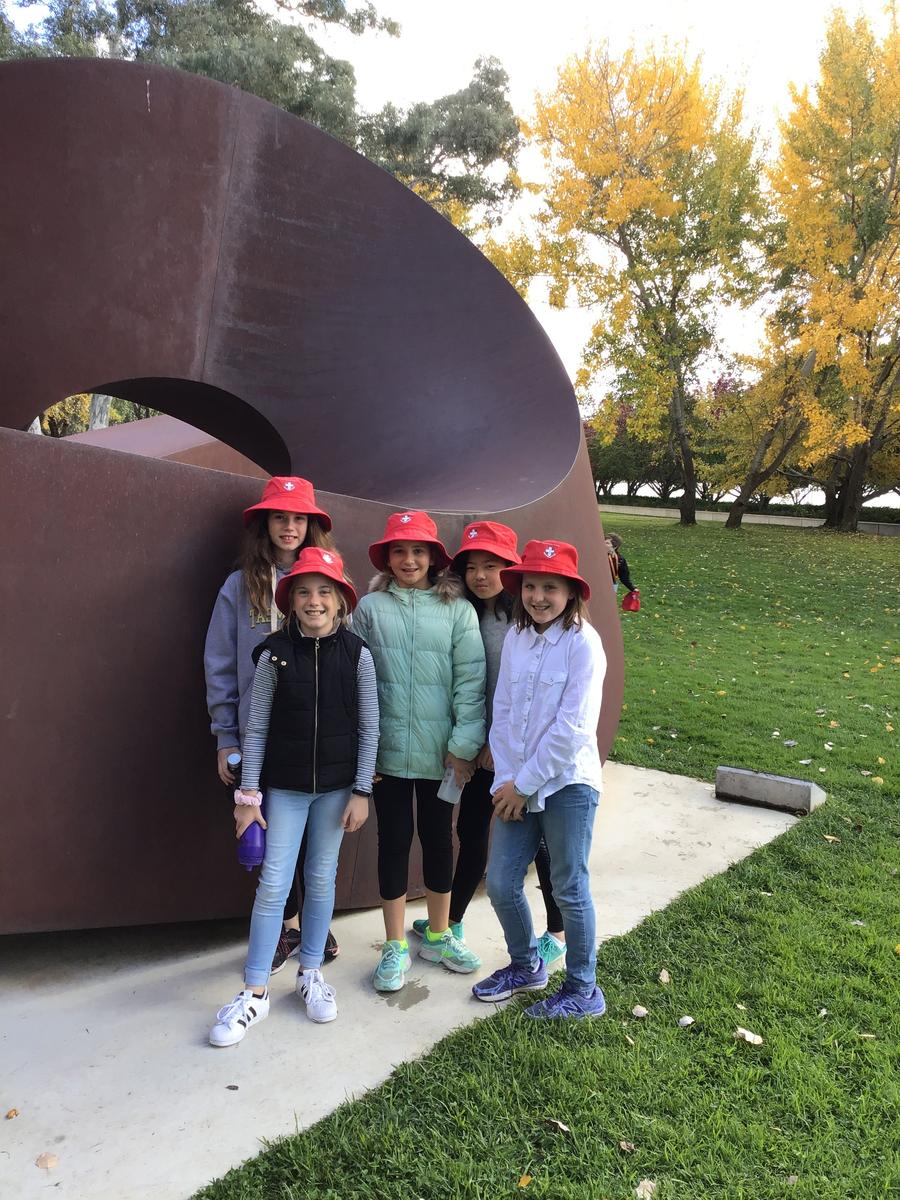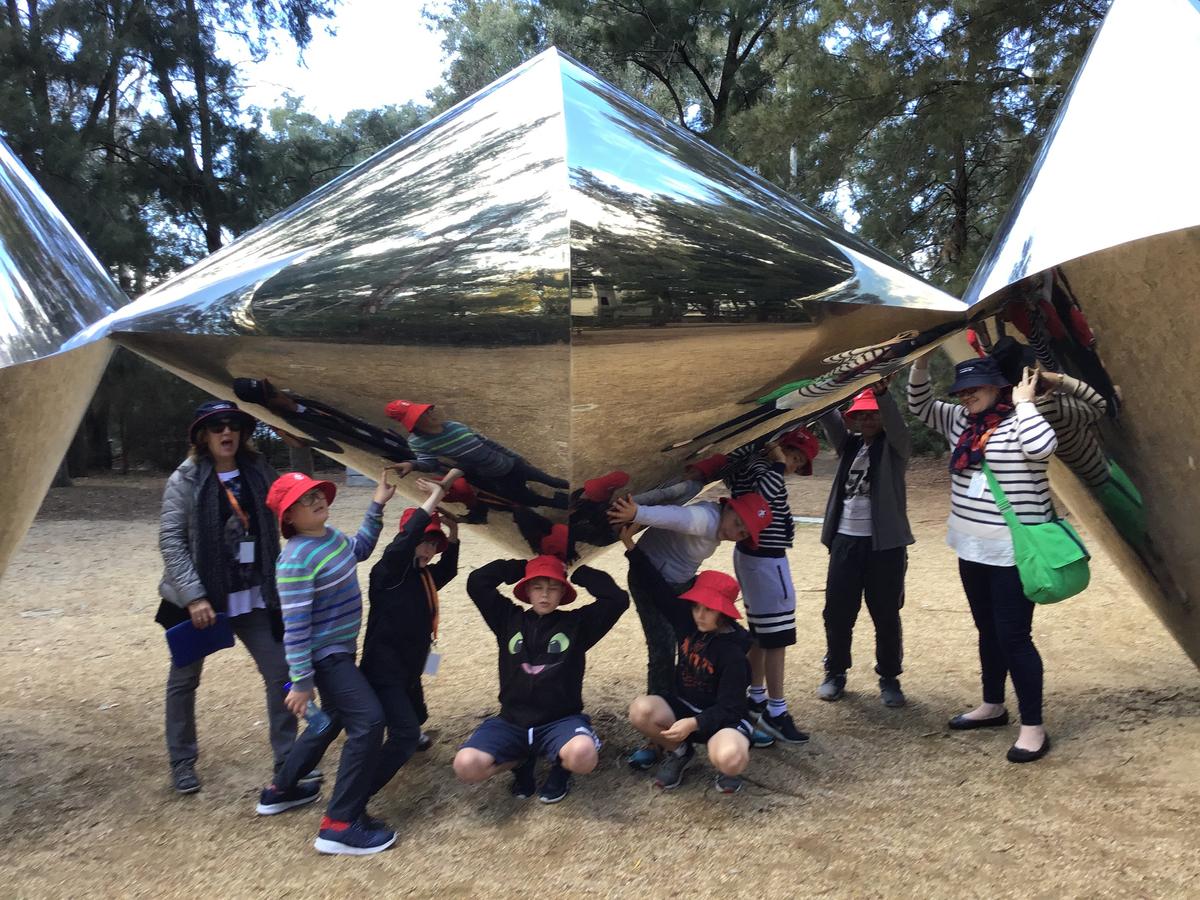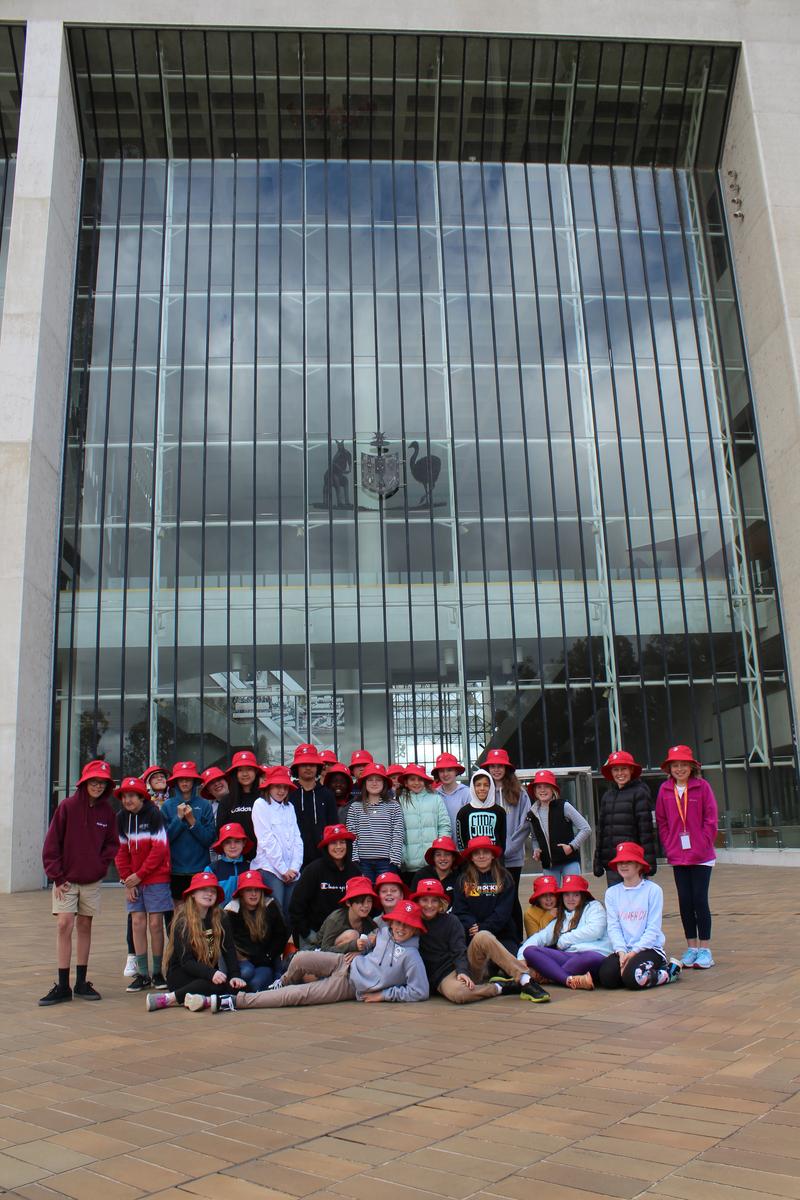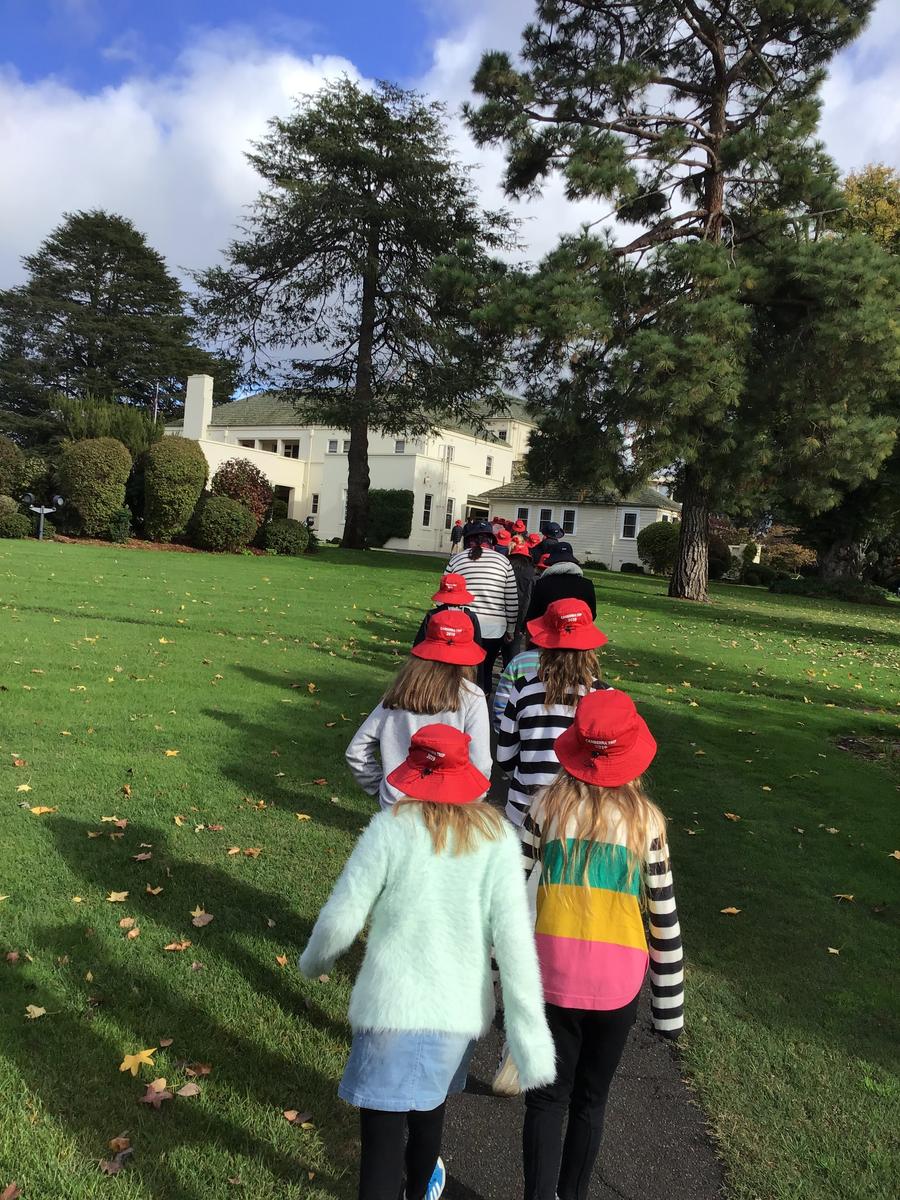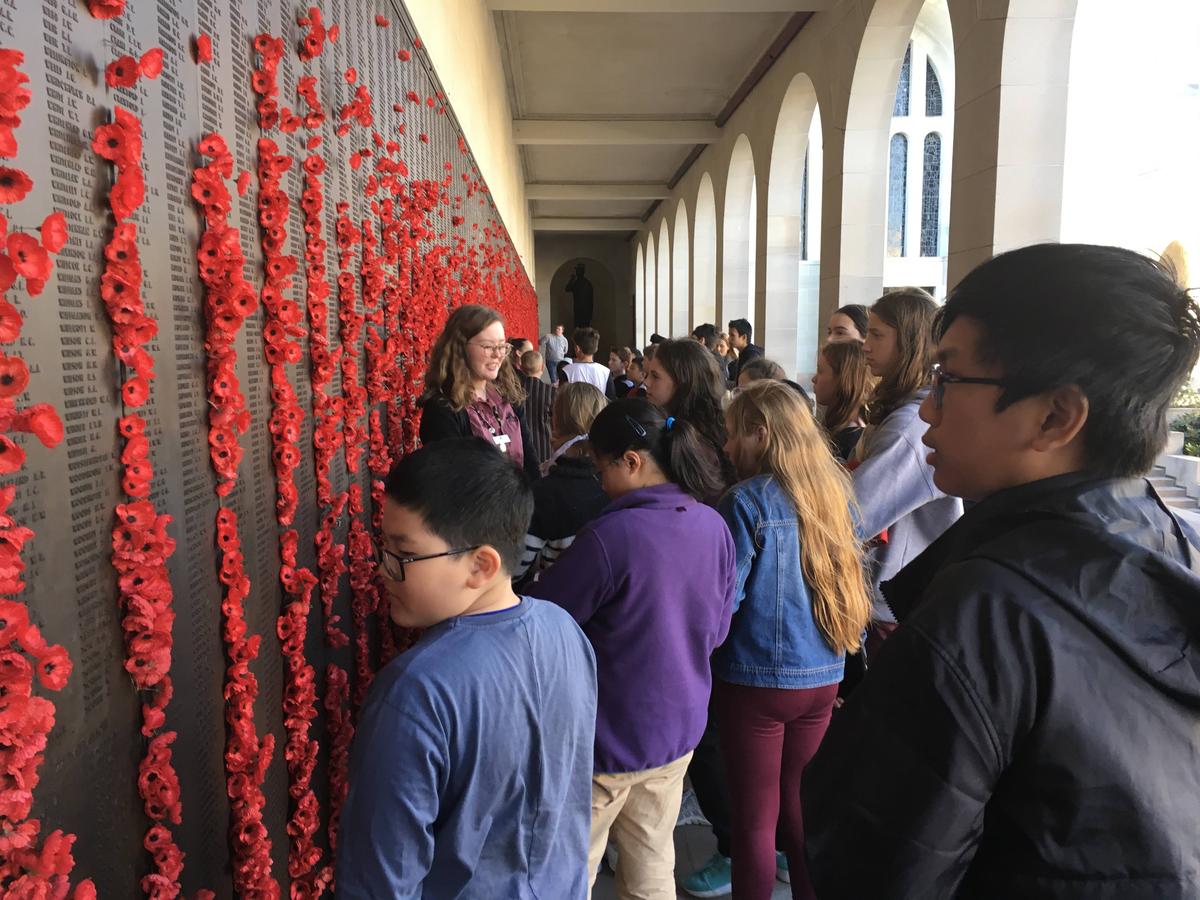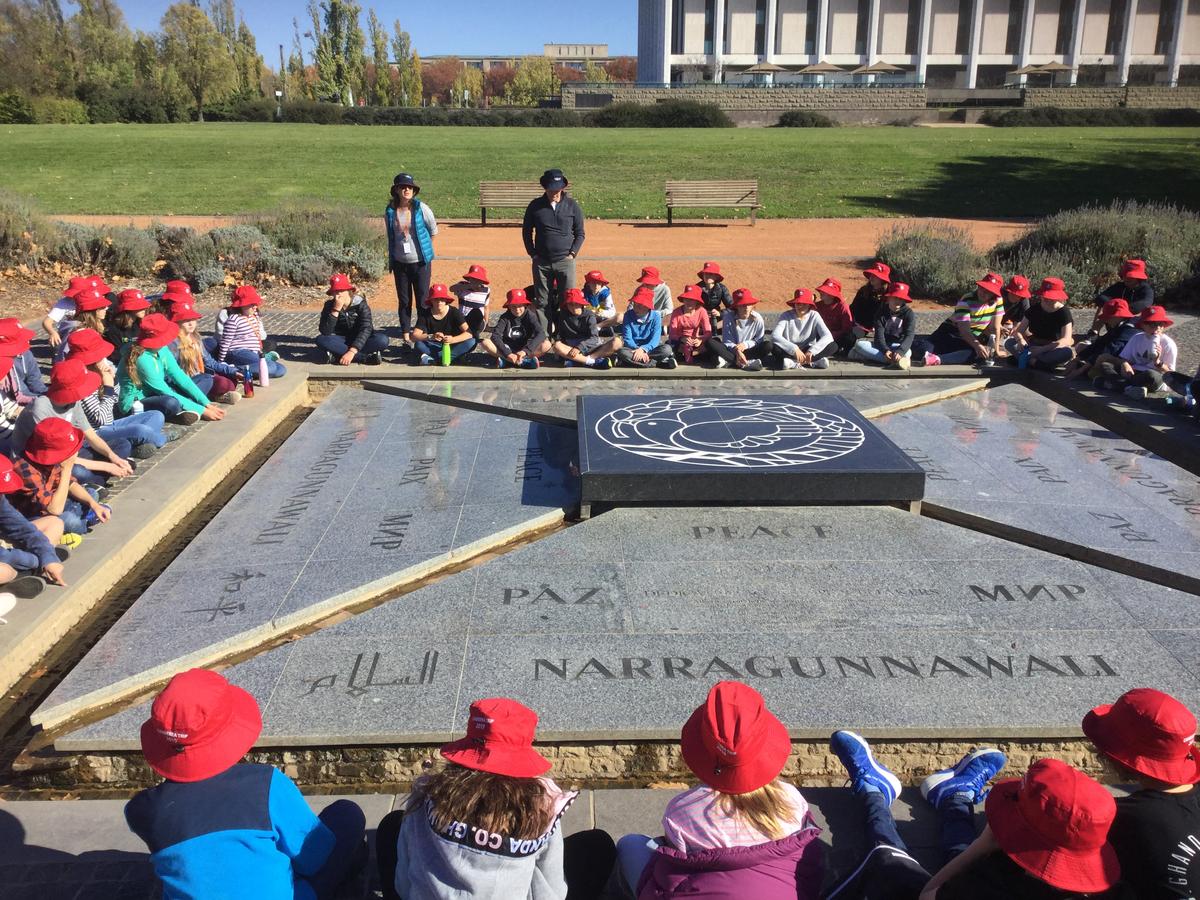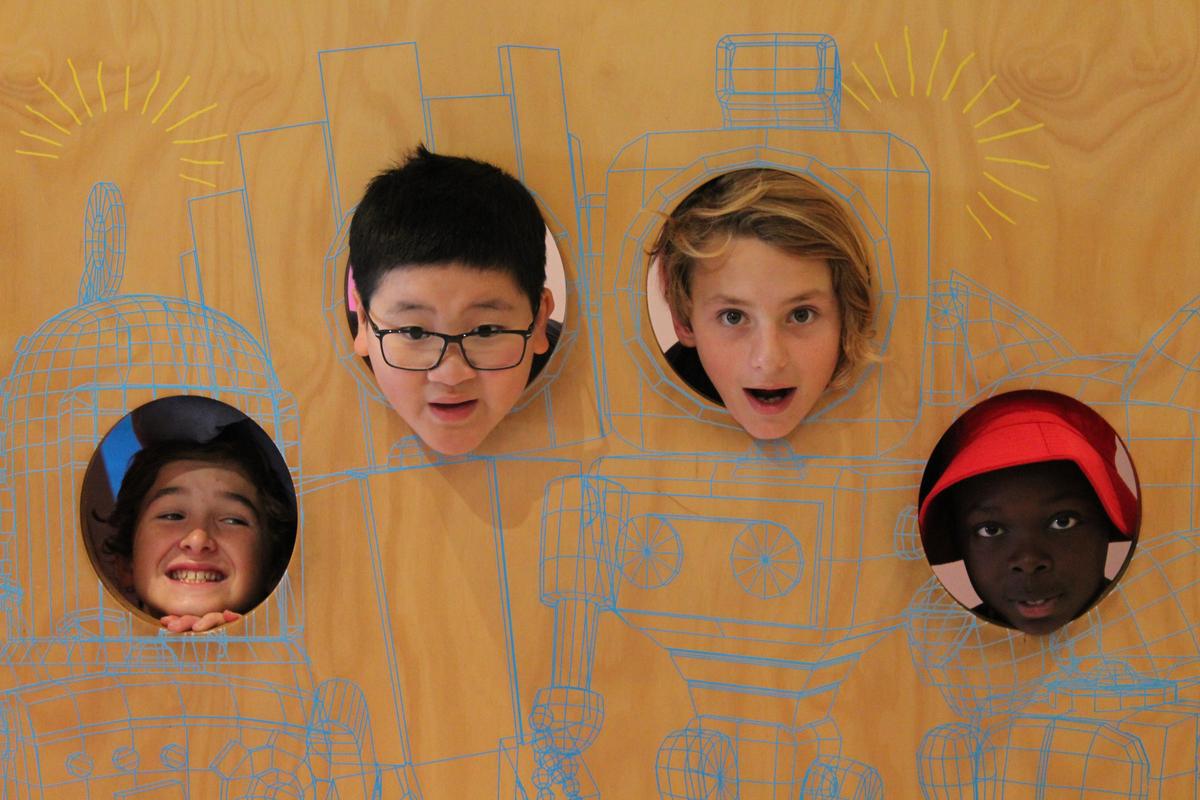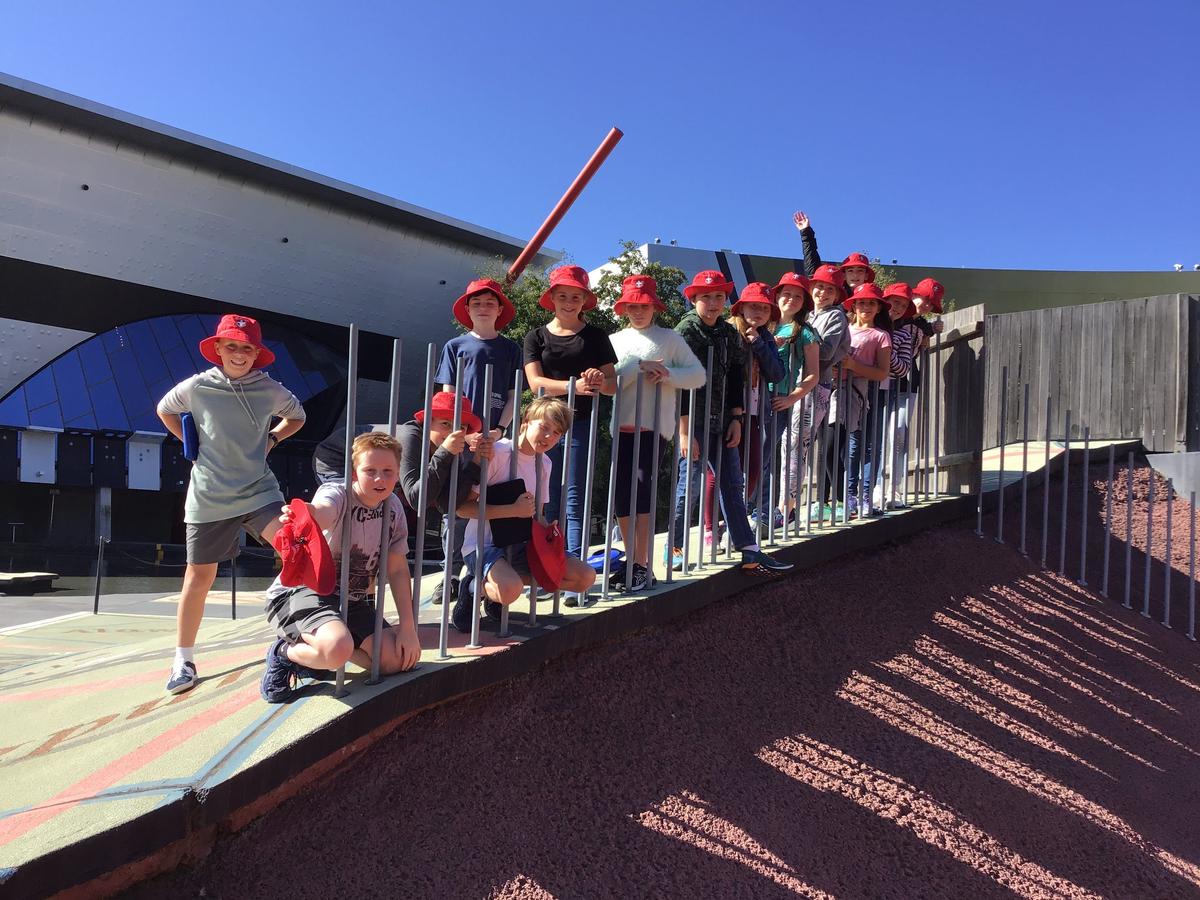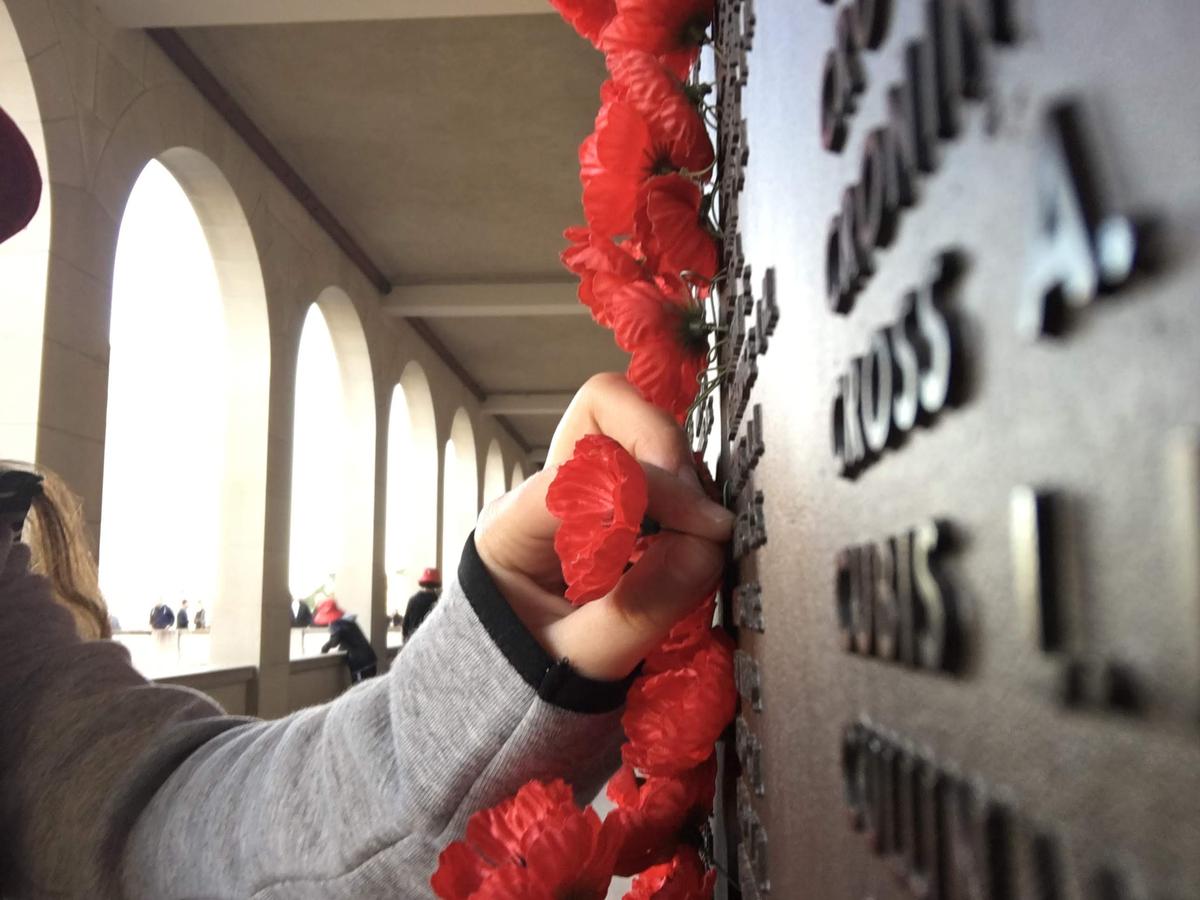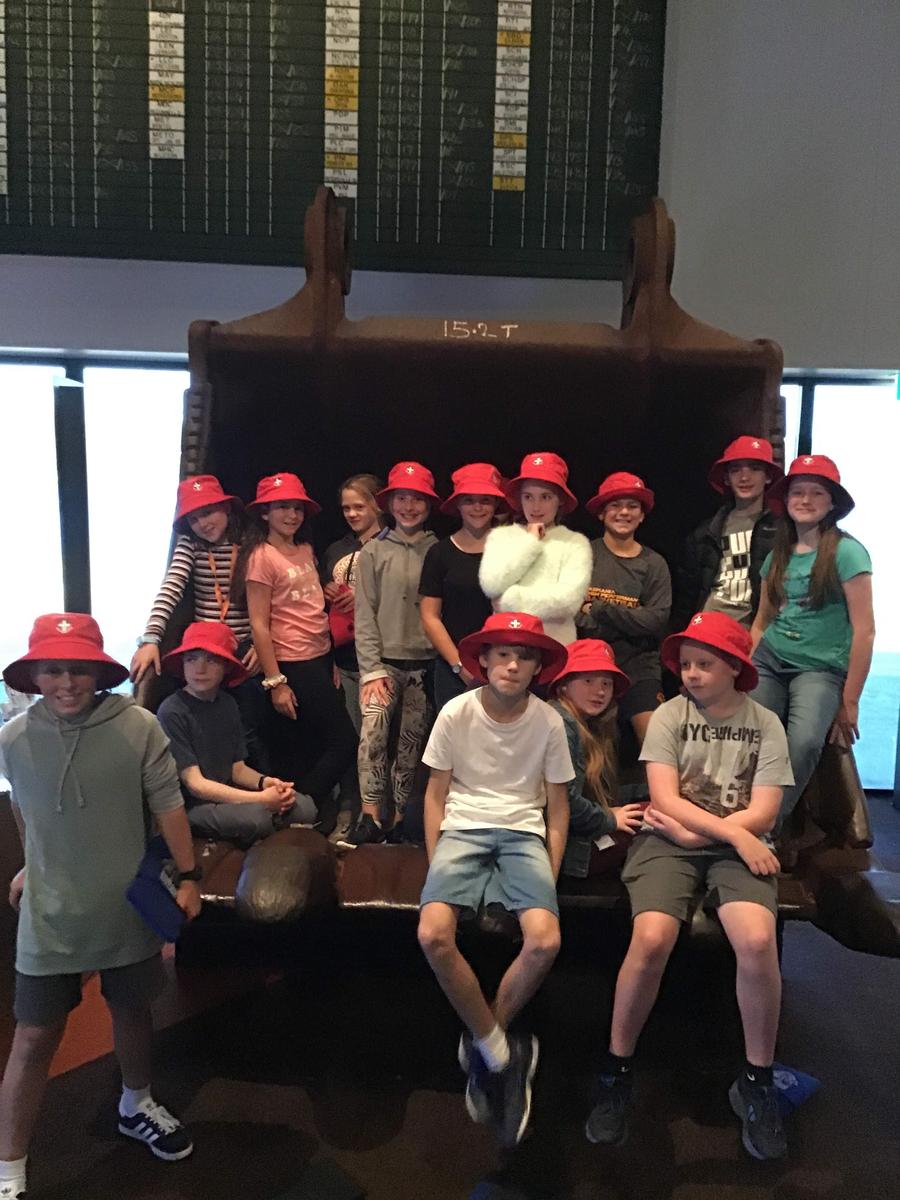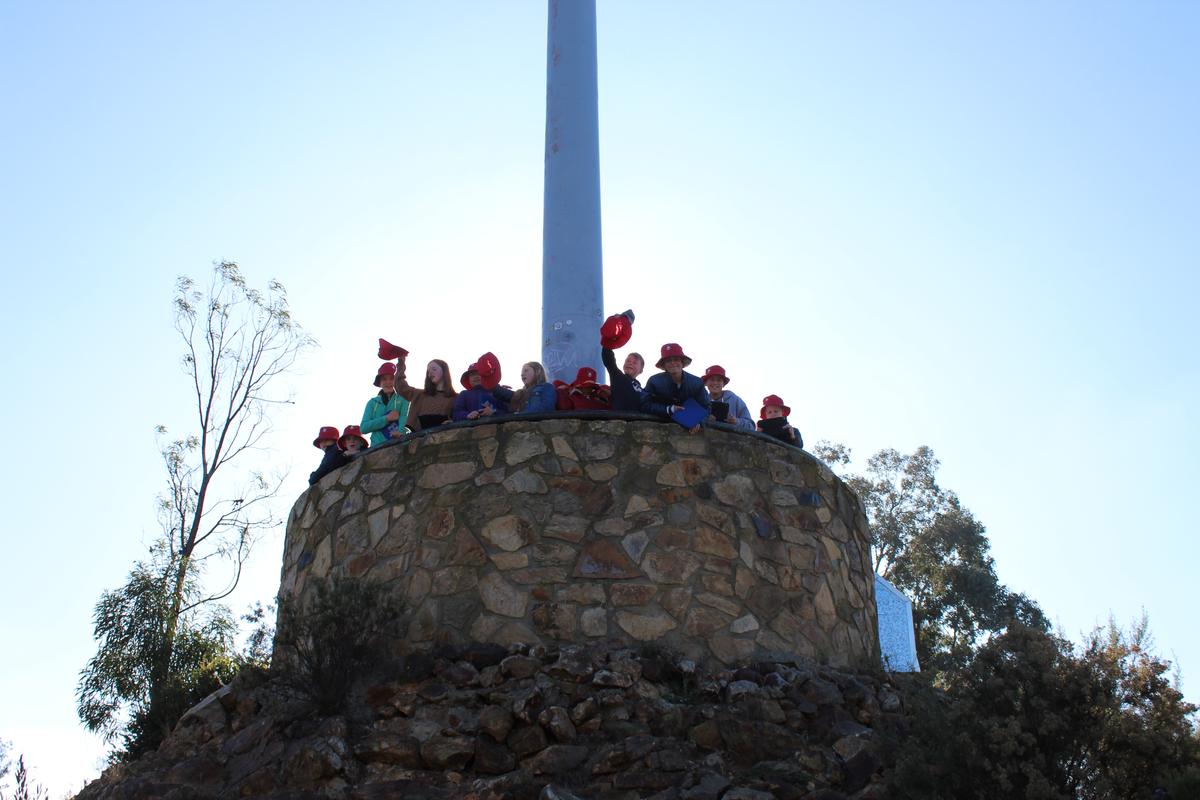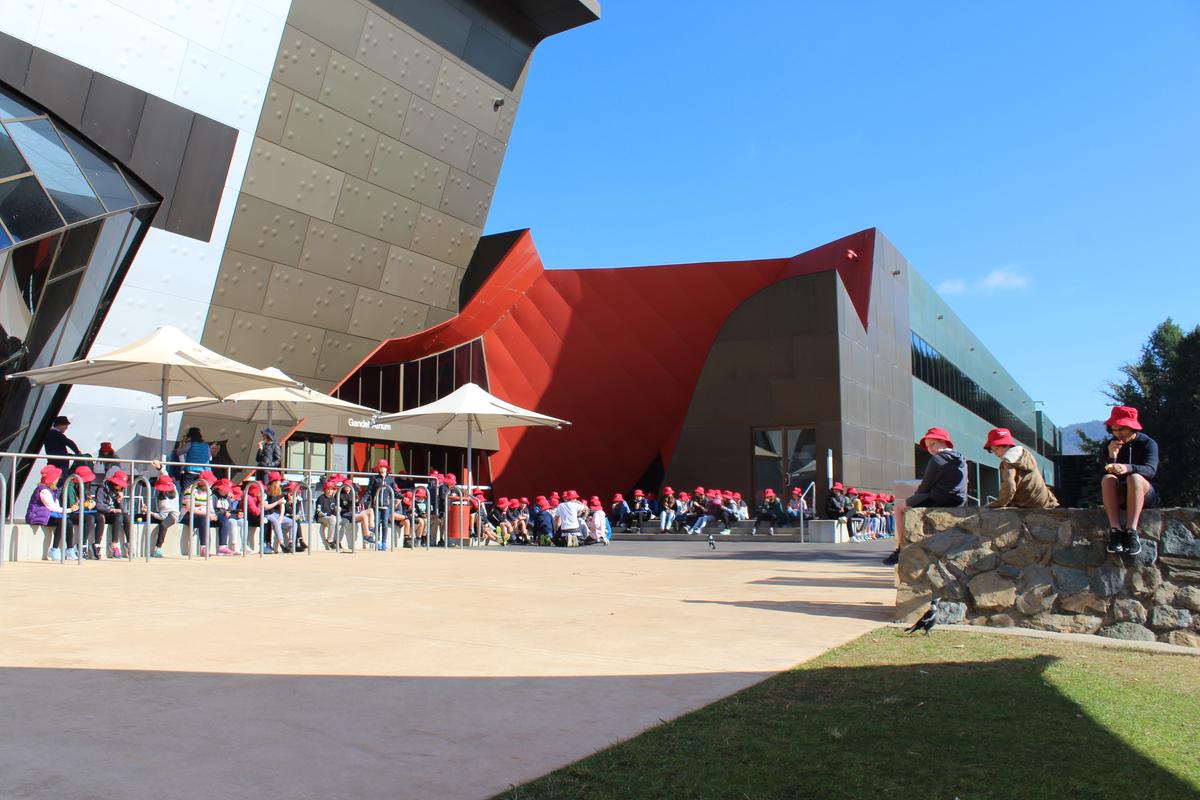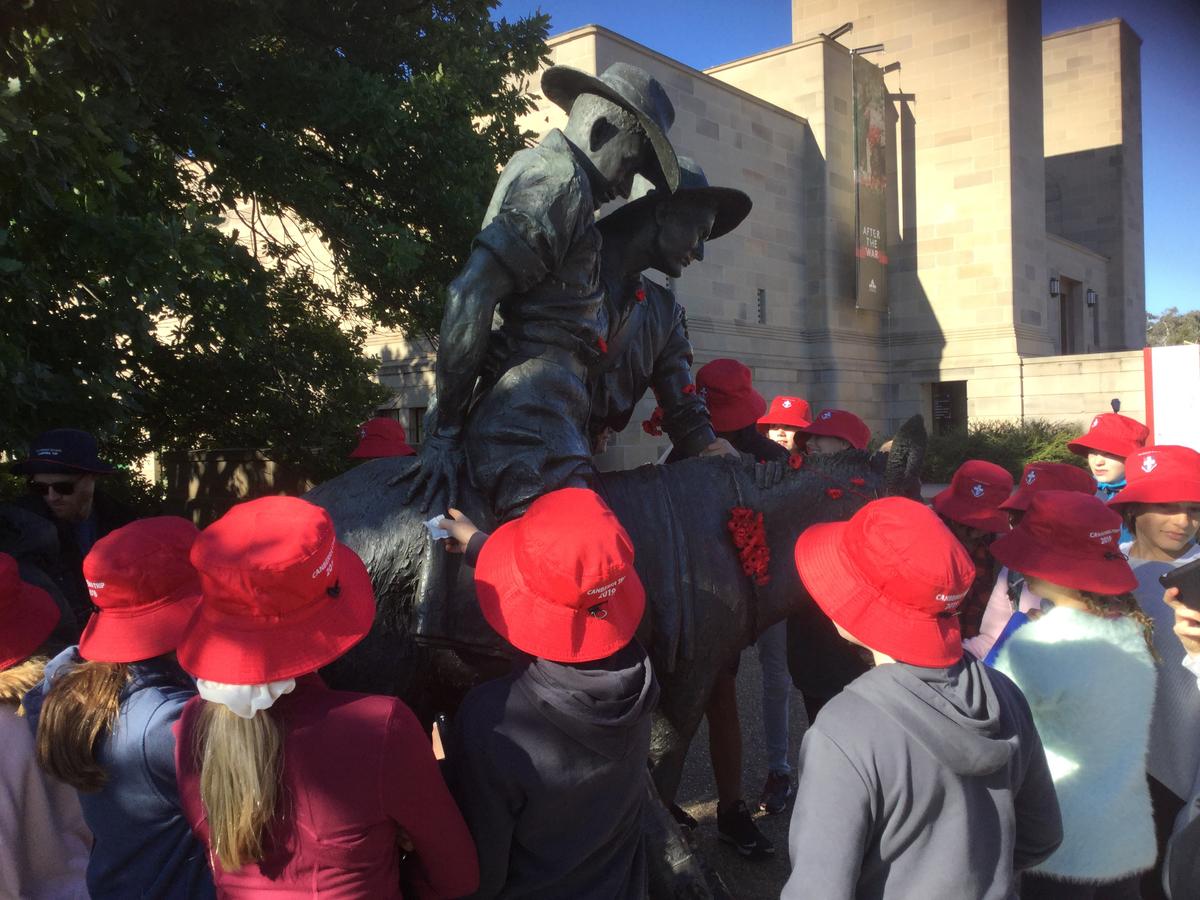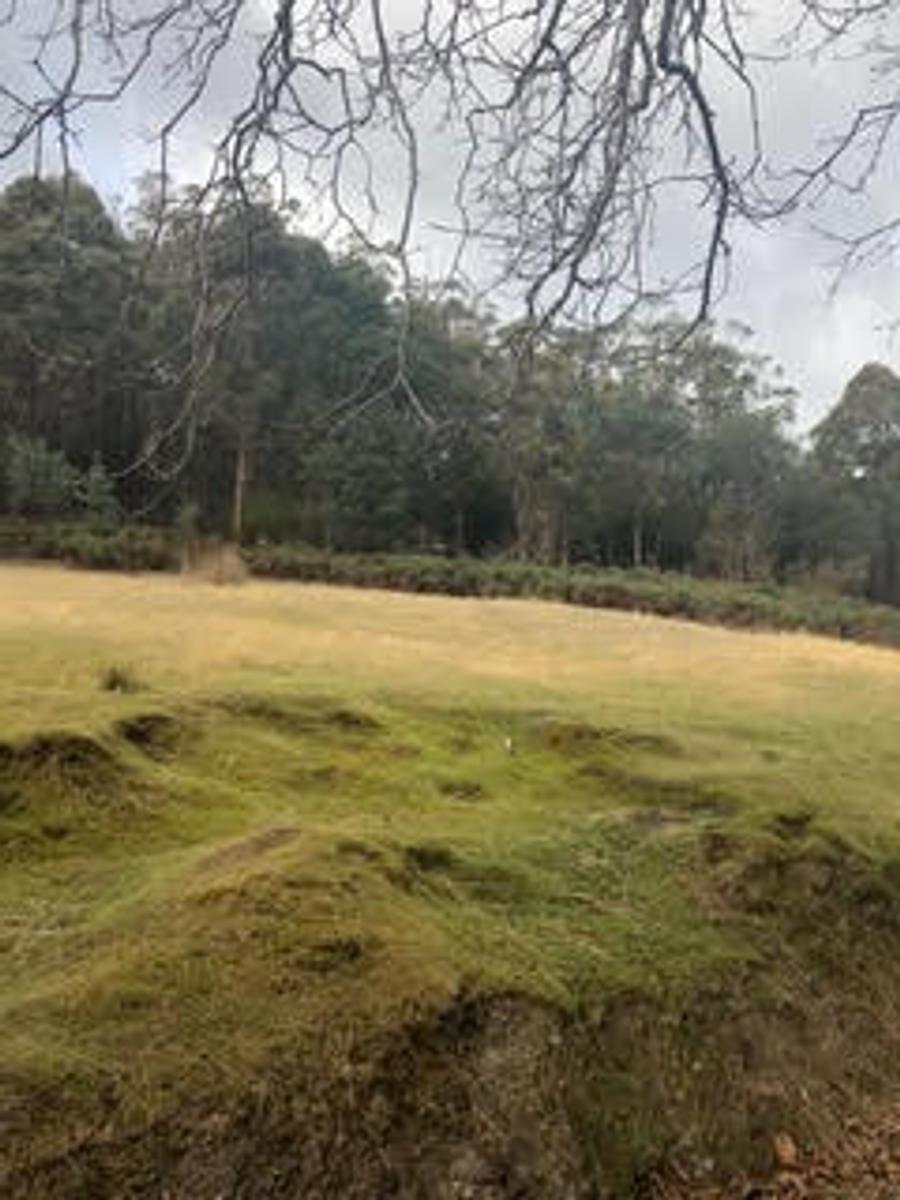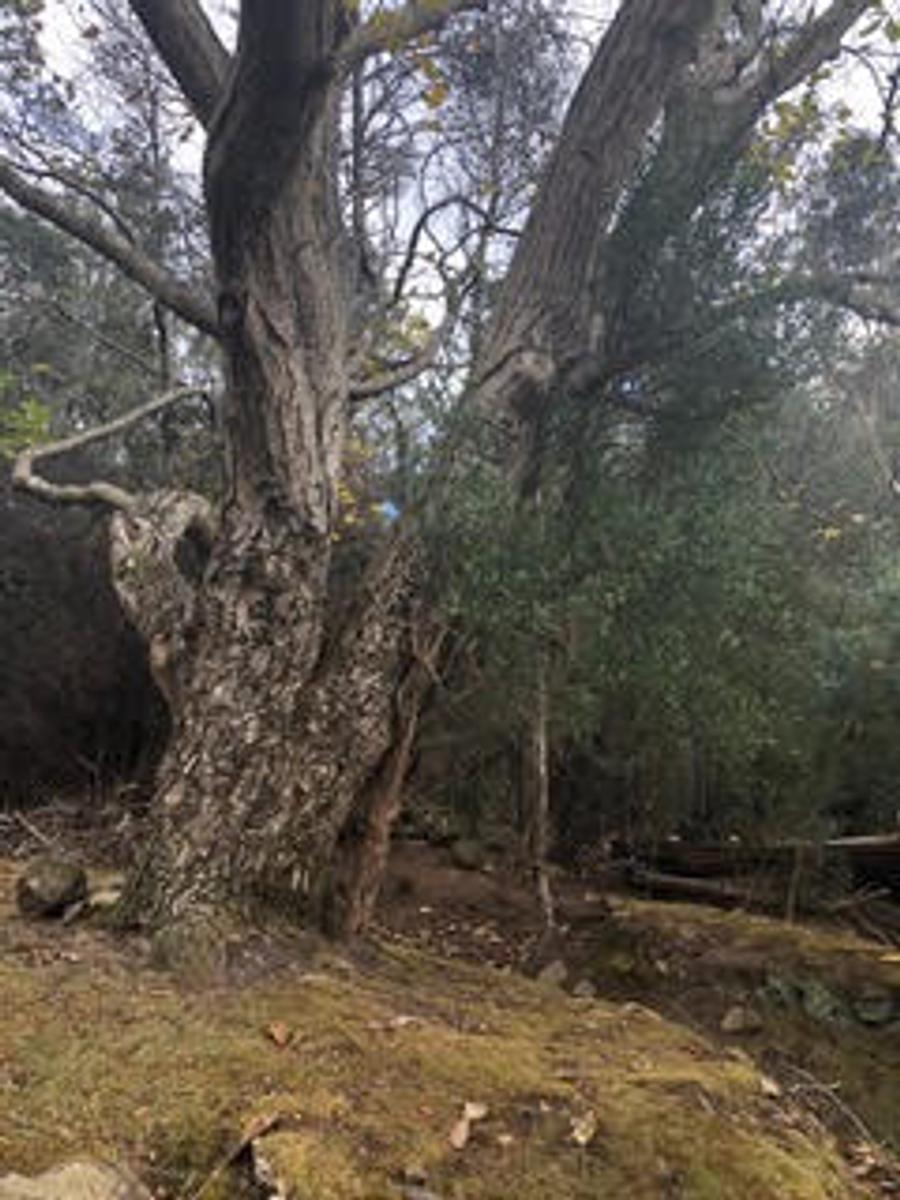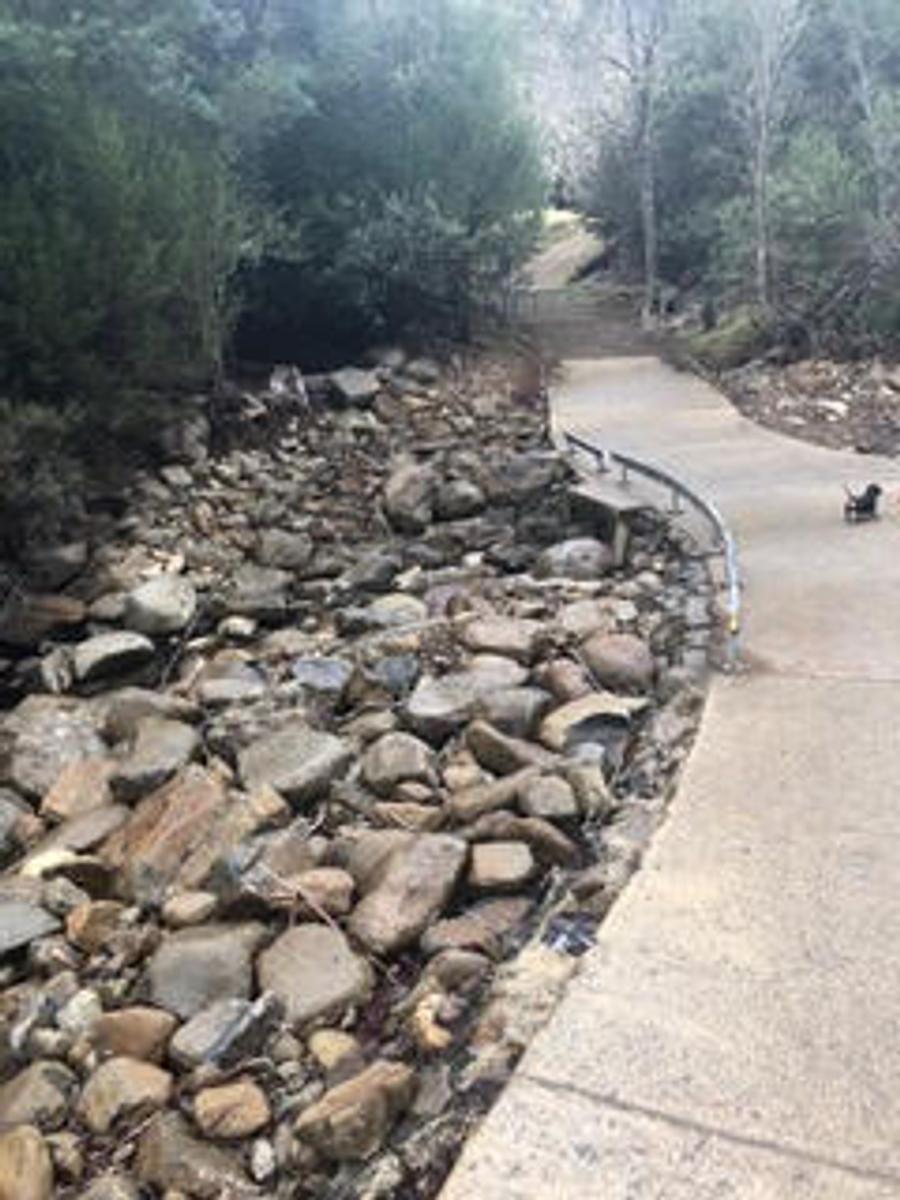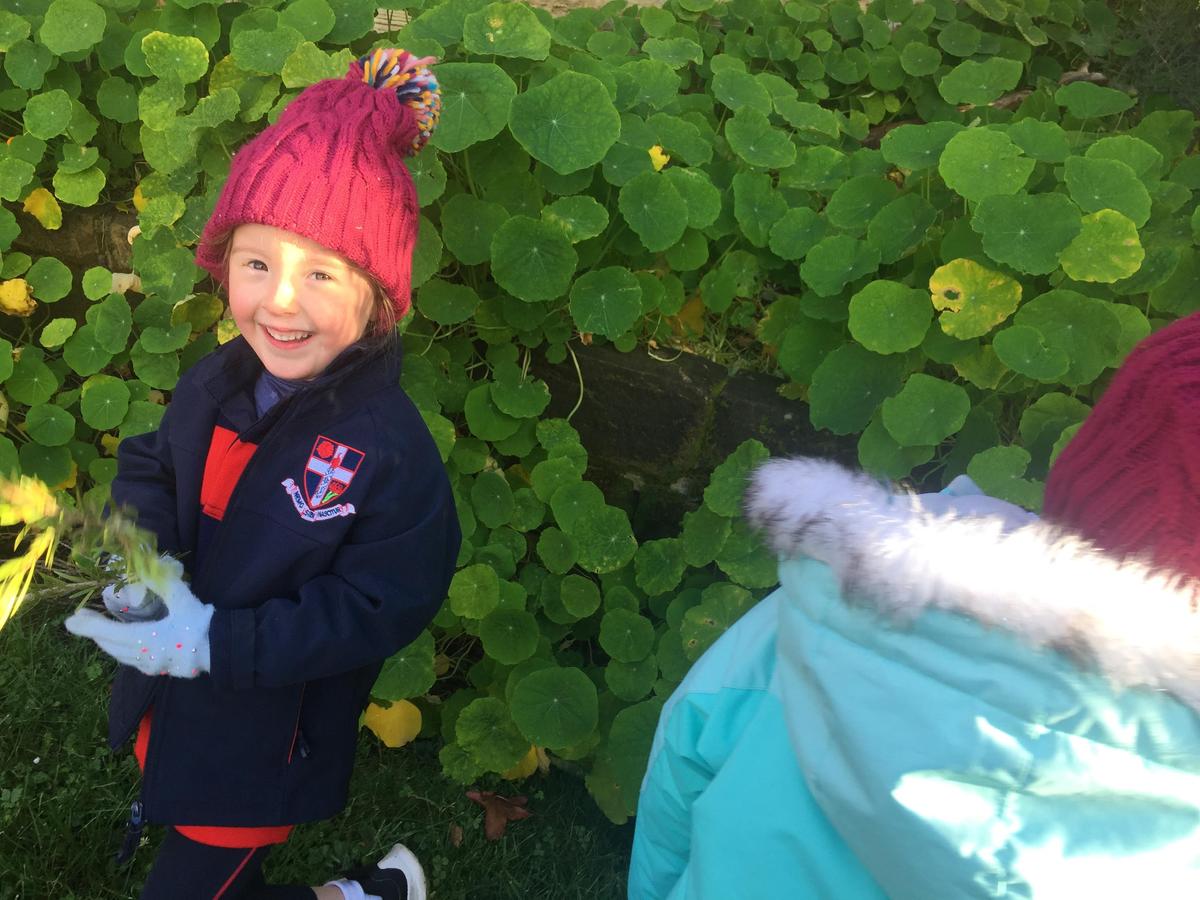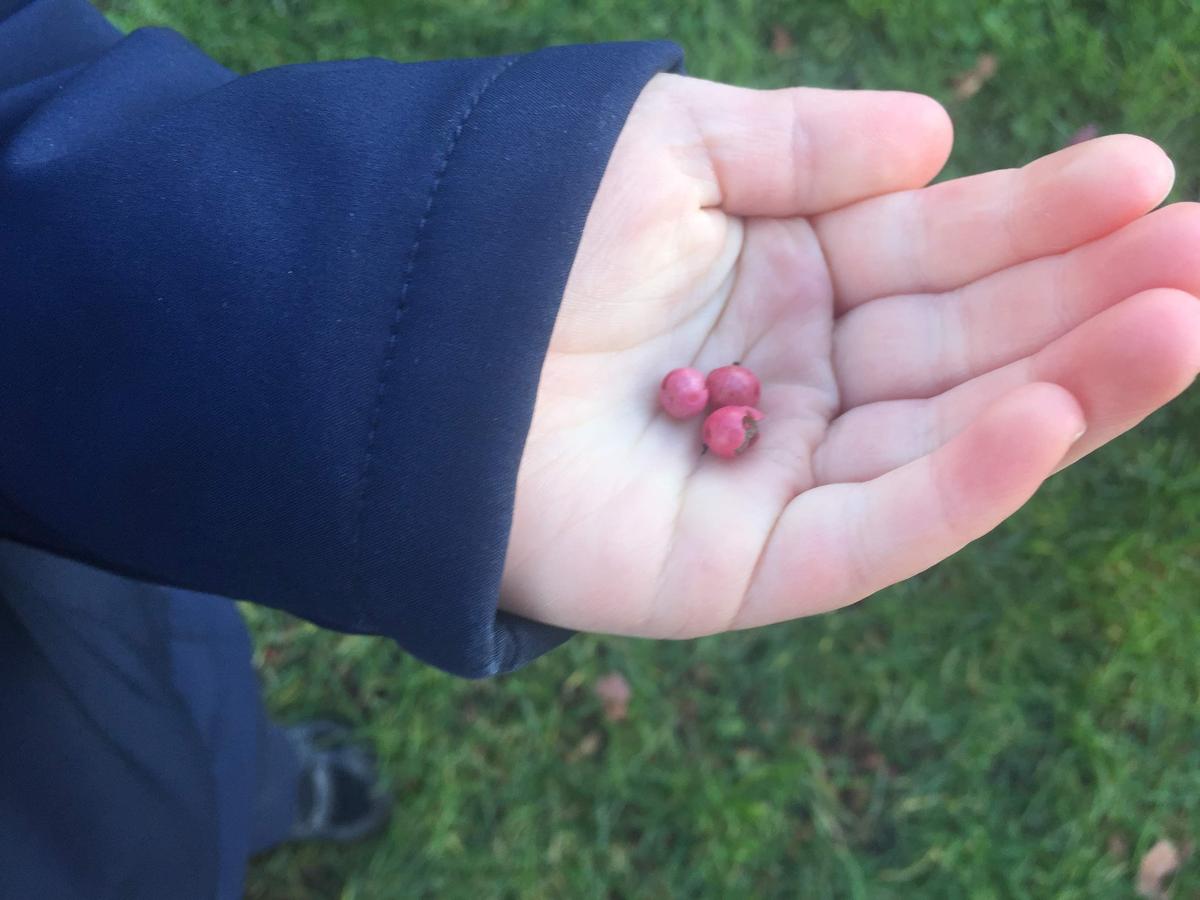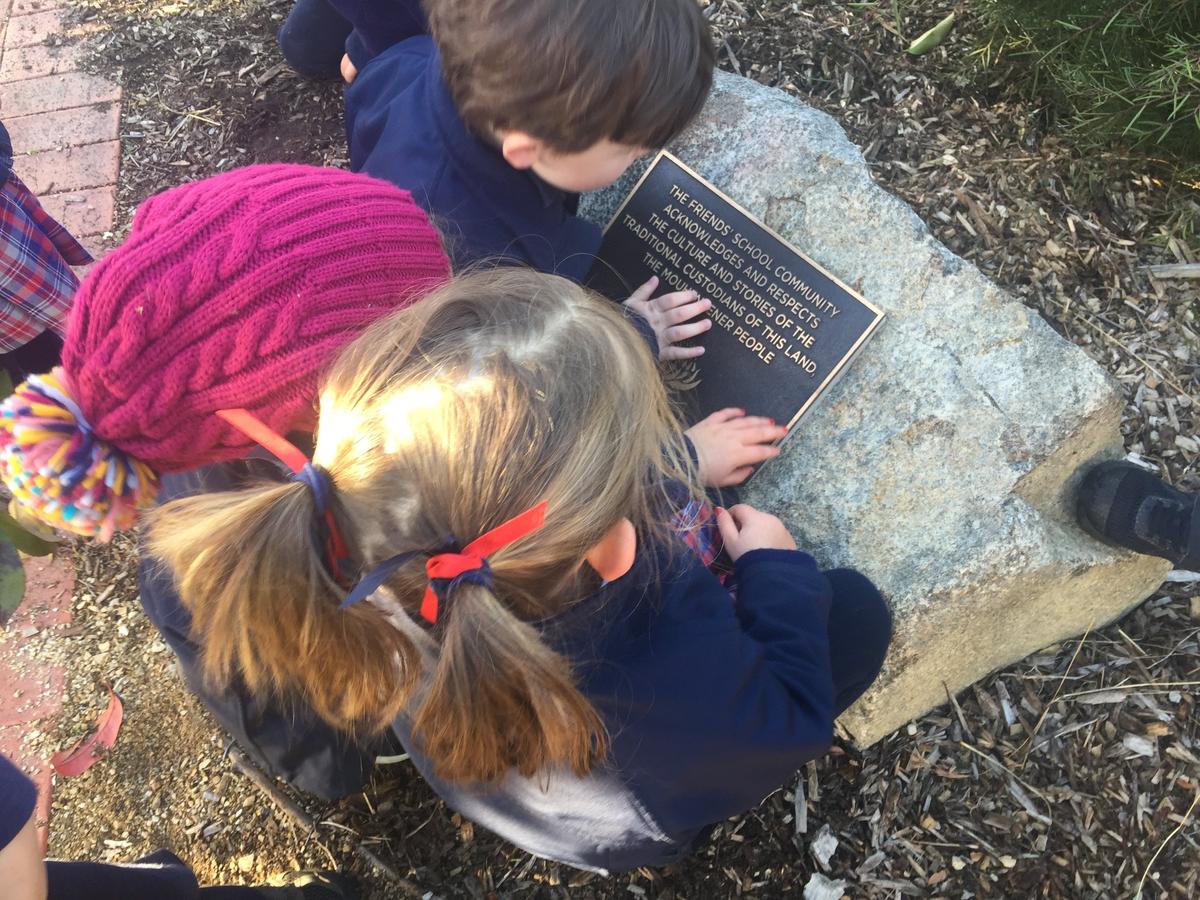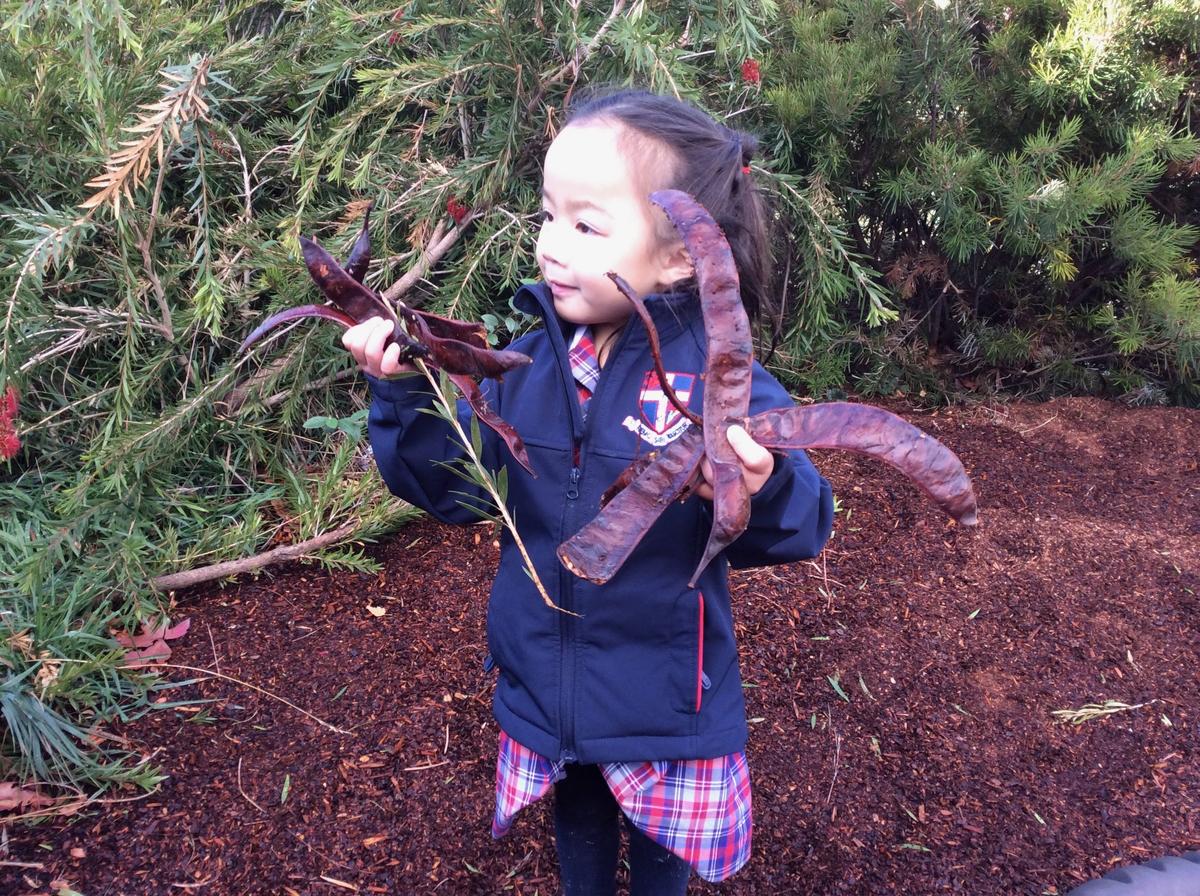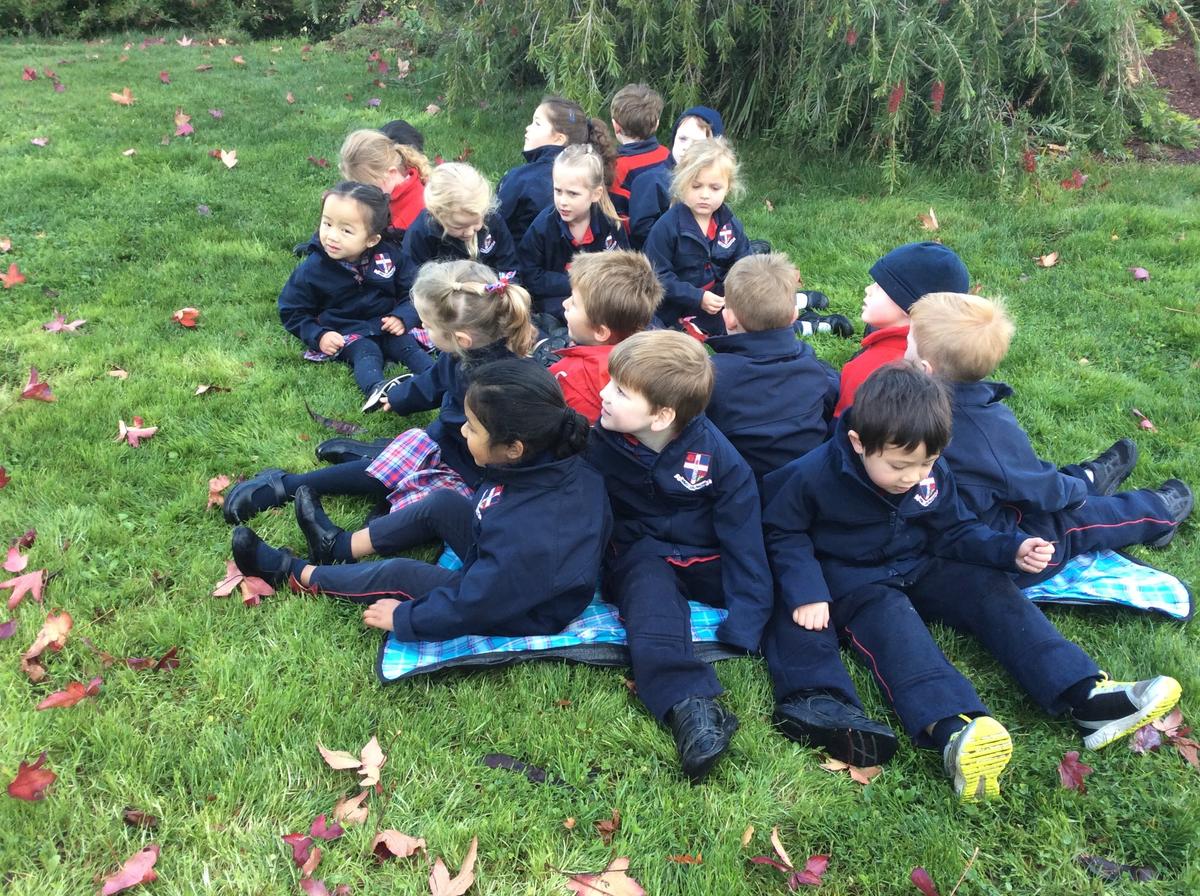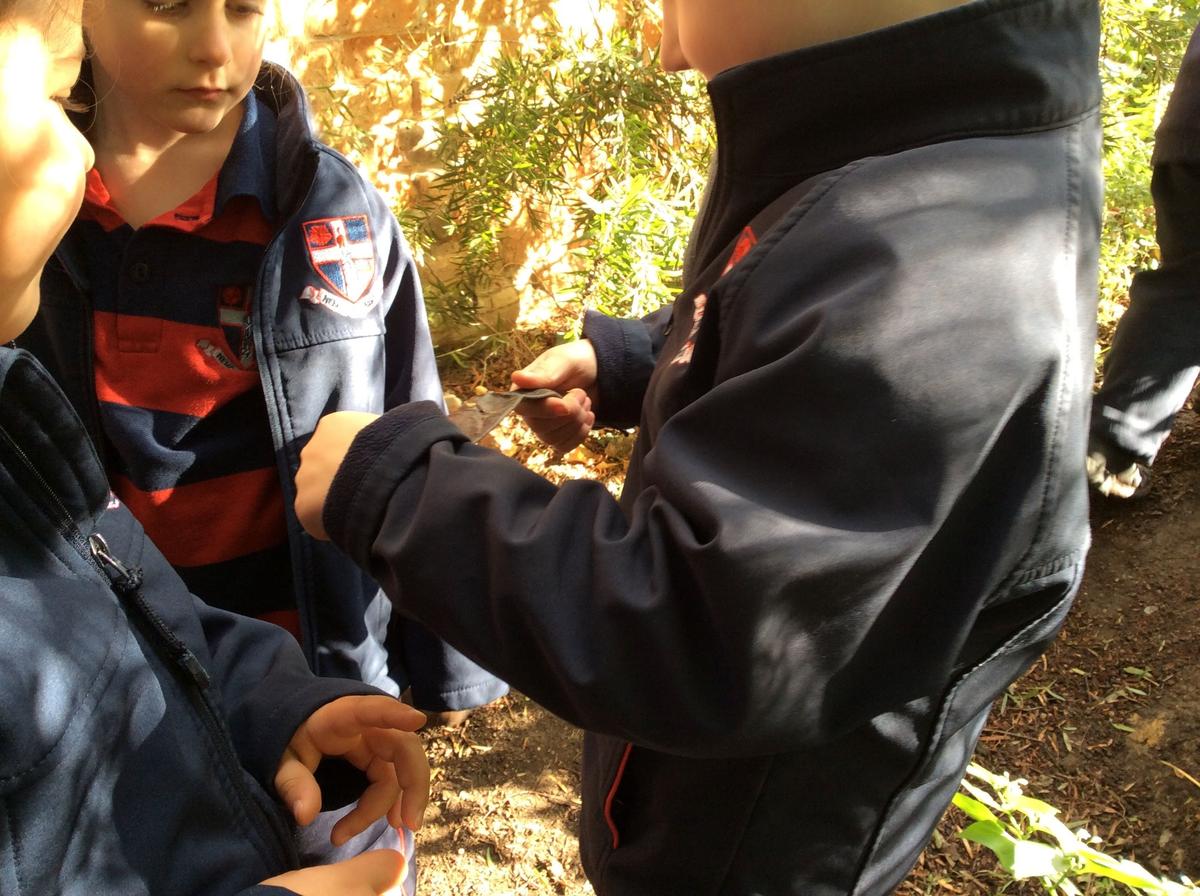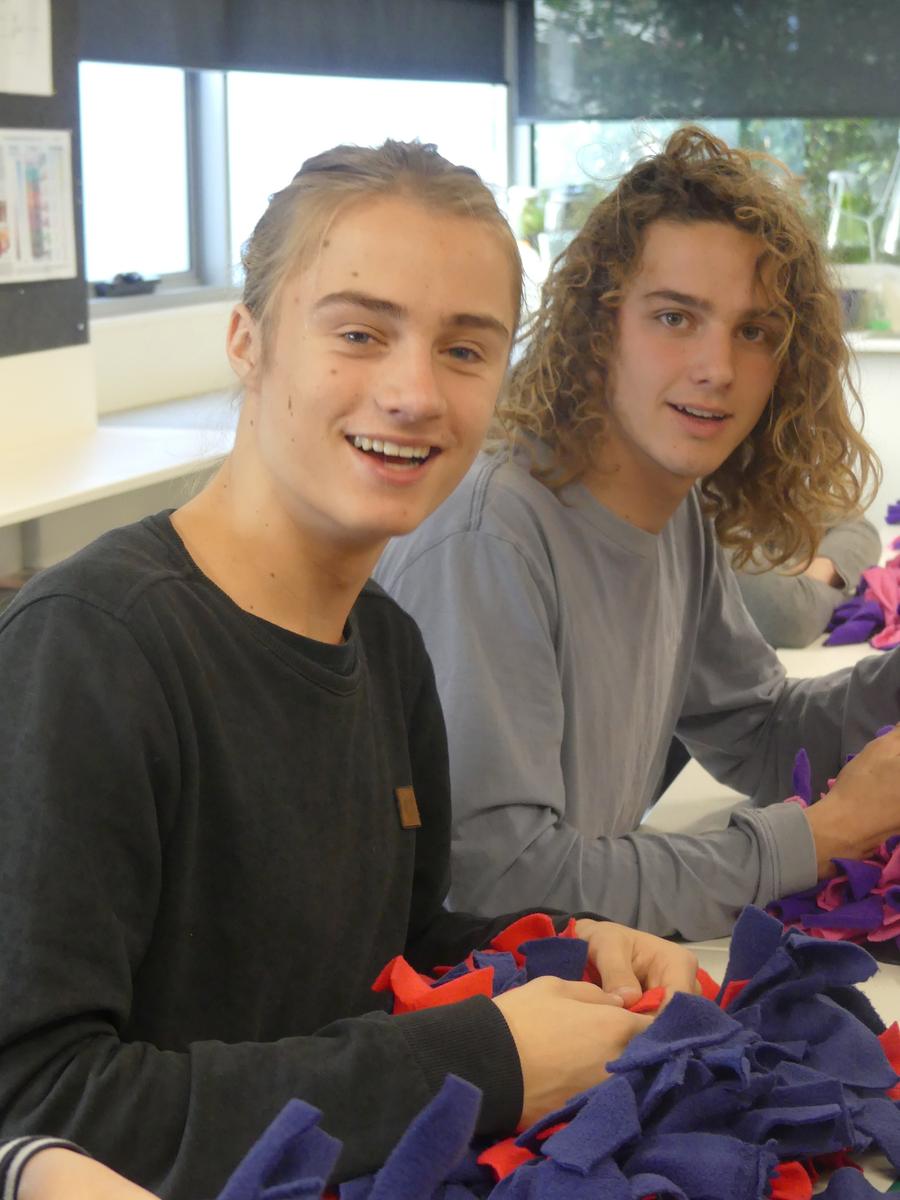Our Learning

Year 6 Take on Canberra
Year Six from The Friends’ School had been preparing for a special experience that they would remember. Year Six were travelling to Canberra by plane, to explore interesting sites and scenery. Recently they had been learning about ‘How We Organise Ourselves’ and ‘Systems Of Government’. These units of inquiries had taught the children information and they could use those facts for making connections, which the students did a lot of during the trip. The curious students and staff were going to be staying in Canberra for five days, full of exciting places to inquire about. The students were able to visit because Year Six and the teachers were going to be sleeping in a YMCA, Leumeah Lodge. Let's hear about their journey to Canberra.
Parliament House
Soon after they arrived in Canberra and had a quick snack, they were off to visit Parliament House. Year Six and the staff split into two groups and hopped on buses. The buses went through a passage underground and parked. Year Six had previously been working on their Unit of Inquiry: Systems of Government and they had been talking about Parliament House, their maiden speeches and how Democracy and other systems work. They had acted out Parliament and question time and managed to write a few maiden speeches during the period. When they arrived at the top they were fascinated to see Parliament House. All students inquired and listened respectfully during the tour. It was a large white building, topped with four poles which held up a beautiful, gigantic Australian flag.
The groups walked into Parliament House and were amazed by the architecture and design. It was very modern and had large marble stairs, striped with gold. It was a spacious room and people sighed in awe of its presence. First Year Six were given a guide and led into the House Of Representatives. The House Of Representatives is a mint green room, with an Australian flag in each corner. Then they visited the Senate which was a red and burgundy colour.
Emily Hansen: ‘One of my Friends’ Grandpa had cut the timber for the Senate’
Unlike the House Of Representatives, the Senate holds a special seat for the Governor General. In the room where they had morning tea, there was a lego model of Parliament House. It was late, yet everyone still had the energy for the next activity.
National Museum
The National Museum was a modern and unusual structure, with a Museum, Gift shop and a small interactive area. When Year 6 arrived they had some afternoon tea of biscuits and fruit and chilled for a few minutes. They soon split into groups and went with staff. People were most fascinated by a giant skeleton of a dinosaur and turned their heads up towards a glowing butterfly structure. They explored the different sections and learnt about Aboriginal history and structures. They also discovered a small space, supposedly an old radio station. Some groups said it malfunctioned and for others it was interesting. Some connections may have been some country facts which were from students' heritage.
International flag display
The International flag display was where the Year 6 students were able to eat their lunch and play in the grass. Many students rolled down the hill and others chatted and ate their lunch. The flag display was a display of large flags which were the countries of Canberra’s embassies. Not far from the flag display, there was a small memorial. The groups all circled around the memorial and had a silence. The memorial held the word ‘peace’ in Arabic and other foreign languages. In the centre of the large stone was a dove it seemed. They figured out the languages and left for the bus, to arrive at the Australian War Memorial.
Australian War Memorial
It contains an amazing history of the past. It showcases all the wars Australians have fought in. From the First World War to the most recent. It displays many victories and just as many defeats. Year Six had amazing tour guides, telling incredible, yet heartbreaking stories. They learnt about how many brave soldiers died for our country. Year 6 all had split up into groups to make our learning about the War Memorial more enjoyable. Year six went into The Tomb of the Unknown Soldier. Year 6 learnt that the unknown soldier represents all soldiers that died in all wars. Year 6 all placed poppies on the walls at the War Memorial for those we had died in the war. They also paid their respects at the last post ceremony.
Government House
Government House and grounds bursting with beautiful scenery and the flourishing garden is the place where the Governor General lives when in Canberra. The grass was so well grown and green, that the students and staff were told to not walk on it. Year Six were greeted by one of the housekeepers of Government House. She welcomed Year Six inside the most spacious and biggest room for receiving guests in. A young lady with a navy suit on and badges showed them a video. A video about Peter Cosgrove and badges that were displayed in a glass case. Year Six and the adults hoped to see Peter Cosgrove (the GG himself), but unfortunately, they didn't catch a glimpse of him.
High Court
Year Six went in their bus groups to the High Court of Canberra. The High Court is two large and immensely tall rooms, where decisions are called to debate about. Year Six went to the first room and had a look around at pictures on the wall and the seats. Then after they asked questions, they went to a court that was ‘in session’. They saw the seven justices and barristers debating a case.
Electoral Office
The Electoral Office is a place where the students learnt more about the purpose of voting and how preferential voting works. They watched a clip about the history of voting and gained new knowledge about the importance of our democratic system. An interactive room enabled students to learn more about our voting systems today. Lastly, they were taken to a room were there were voting boxes. Students were chosen to be volunteers to be a polling assistant, scrutineers and counters. The other students were given paper from the polling assistant, so they could fill out from one to four their favourite fruit. The options were orange, banana, apple and peach. This hands-on activity helped the students learn how the percentage of voting is essential and how important preferential voting can be. Overall, orange won for both elections.
AIS
In the afternoon, close to evening, Year Six arrived at the Australian Institute Of Sport. They sat down and two athletes introduced themselves to be their tour guides. Year Six split up into two groups and visited the gymnasium, athlete workout gym, volleyball court, swimming pool and the largest indoor stadium in (at least) Canberra. When they were done with the tour they bought some memorabilia from the AIS gift shop. There were opal necklaces, clothing and handballs. After Year Six got their gifts, they went to an amazing interactive sports centre. There was a snow sledding simulator, a canoe simulator and much more! They had a lot of fun, energetically racing from one simulator to the next.
SIEV X Memorial
Year Six of woke up early (and very groggily) to see the SIEV X Memorial early in the morning. The SIEV X memorial is located near lake Dobson and commemorates the many men but mostly women and children that drowned while attempting to enter Australia by boat. Many Year Sixes commented on how beautiful and peaceful it was. Year Six were reflective during that time and reflecting on all the lives that were lost on that boat. There are over 200 poles at the SIEV X all painted (or decorated) from around Australia. The Year Sixes were very excited to discover, that some poles were from Tasmania (where all the students live). Some students hugged the poles in recognition of those who had died. We had a visit from the local Quakers in the area, who have been restoring the poles. Some of the Year Sixes were very keen to do service and help the Quakers paint the poles.
National Library of Australia
To begin the tour, the class looked at old paintings, as well as old books, and protests about aboriginals. We looked at the first (incomplete) map of Australia (of which there are only 4 copies in the world). Year 6 also got to look at some of Australia's famous c
The Art of Oration is Alive and Well
It is widely accepted that one of the greatest fears of many people is public speaking. The idea of publicly presenting one’s thoughts and beliefs is something that can make one’s heart race and mouth go dry. Therefore, the courage it takes for a young adult to present to an audience of their peers is immense. Thankfully, there are still students at Friends’ who are prepared to accept this challenge and the past two months have seen some admirable performances.
The Ray Green Speaking Prize is the Year 11 & 12 premier public speaking event. Each year, senior students wrestle with a prompt that should take them to the hearts and minds of their audience. This year was no exception. Arditya Ayra, Jeremy Temple, Michael Irwin, Zoe Knight and Phoebe Dunbabin took on the challenge of addressing one of our Quaker testimonies: integrity. In Hamlet, Shakespeare gives Polonius dialogue that is oft quoted and as frequently misunderstood. It is Polonius’ advice to his son, Laertes:
This above all: to thine own self be true.
The audience was treated to a diverse range of ideas that took us from the rise of the Yellow Jackets to the need to be oneself – no matter the circumstances. This year’s judges were Professor Tim McCormack and Betty Reeve (former Head of English). Both were delighted with all the students and after serious consideration awarded The Ray Green Speaking Prize as a joint prize to Phoebe and Zoe. Zoe’s thought-provoking appeal to her generation for integrity and honesty in online life and Phoebe’s beautiful reflection upon her grandfather engaged the heads and hearts of all at Clemes. Below is an extract from Phoebe’s speech:
When we think of the people who inspire us, celebrities generally come to mind. Whether they are actors, musicians or athletes, their success can be motivating. For me, I think of my Grandpa, not because he has some big success story, but because he has always followed his own path. While I had grand dreams of leading the country, my Grandpa just wanted to be a farmer. Over the years, this dream grew, until in Year 8 my Grandpa made the decision to leave school and pursue a career in farming. Forward 60 years, one heart surgery and a hip replacement later, guess who’s still a farmer? And there I was complaining about one election.
The prompt for this speech, “This above all: to thine own self be true,” resonates strongly with my Grandpa’s experience, and although he will never study Hamlet, his decision to follow his own path through life has served him well.
To act with integrity often requires something to be given up, and in my Grandpa’s case, he has made sacrifices at times to fuel his goals, as well as those of others. While his life has certainly not been easy, his commitment to his childhood dream has resulted in a lifelong career, which is a major source of inspiration for me. His actions have also allowed him to live a life with few regrets, which is something, even at 17, I cannot claim to have achieved.
When I was younger I was also fascinated with navigation, maps and Astronomy. Although I have since moved on from this hobby, I think it applies well to the theme of today’s speeches. In the same way that we use maps to get from one place to another, other people can also serve as tools with which to navigate the complexities of life. For me, my grandpa is like a compass, he has taught me how to act with integrity and has helped to shape the direction of my life. For this, I am forever grateful.
Ambrosia Negri and Zoe Knight accepted the challenge of entering Lions Youth of the Year. The Lions Youth of the Year is an opportunity made available through the sponsorship of The Lions Club and is designed to encourage student interest in leadership and the qualities required to take an active and constructive role in the community through public speaking, good citizenship and service. Both girls made it through to the Southern Regional Final delighting the audience. Zoe went on to the state final in Forth where she conducted herself most ably.
The Rostrum Voice of Youth Southern Regional Final was then held in May. Zoe Adams represented Friends’ very well in the junior division with her speech addressing the prompt: Be Part of the Discussion. Below is a segment from Zoe’s prepared speech:
It is important to consider that being part of the discussion is not restricted to just the conversations held but can also include actions such as taking part (and organising) strikes and protests. Being part of the discussion assists in raising awareness of the issue which can lead to change being made. A big example of this would be climate change awareness, demonstrated through the school strike for climate. This is an issue that has been so widely publicised in recent months and so many people are aware of it, but none of this would have happened if one girl had not been part of the discussion. Sixteen-year-old Greta Thunberg started this entire movement because she felt it was her duty to do something about climate change when those in power would not. The strikes would not have become a global movement without millions of young people around the world taking part in the discussion in
order to spread the awareness that lead to the global phenomenon of school striking that is occurring today. Another example of change being made just by being part of the discussion is the Bye Bye Plastic Bags movement in Bali. This is a movement that was started by sisters Isabel and Melati Wijsen - at ages 10 and 12 - who wanted to: “Make [our] island home, Bali, plastic-free”. I had the privilege of listening to Melati speak about her role as an activist in person. She spoke about the way that this worldwide movement was formed simply by two sisters getting together with a group of their friends and talking about the issue of plastic that was taking over their island. There are now 35 Bye Bye Plastic Bags teams active in 25 different countries across the world proving, once again, just how valuable it can be when a few passionate young people are part of the discussion.
Aaditya Arya, Jeremy Temple and Zoe Knight similarly represented Friends’ with distinction in the senior division. Jeremy Temple was awarded the Rostrum Encouragement Award for his reflection on his chosen prompt - ‘The Modern Epidemic’ - of loneliness. Zoe Knight engaged with the same prompt in her beautifully crafted prepared speech on ‘The Modern Epidemic’ of social media.
We have a modern epidemic leaving a path of mass destruction in the lives of youth and its lying in our back pockets. A modern epidemic that squeezes us into conformity, that neglects authenticity, self-integrity. A modern epidemic that cripples the self-esteem of young people across the world.
Ladies and gentleman, technology the size of the palms of our hands is creating devastation with a size far too large to measure. And the primary culprit? Social media. So, with that in mind, I would like to present to you today a modern epidemic that, at large, is often ignored: the expectations imposed by the online world…
Social media not only affects how we spend our time, but it affects how we feel about ourselves. During a survey of British youth, young people commented how social media exacerbates mental health issues like depression and anxiety, deprives them from sleep, exposes them to cyberbullying, fosters a negative body image and creates worry around FOMO, an acronym for fear of missing out. This is all attributed to the standards social media fosters that we feel compelled to maintain. With photoshop and the like at the tips of our fingers, authenticity and uncensored selves online are now considered ‘uncool’ and ‘untrendy’. As a result, centuries-old bodily standards now sit in the news feeds of our social media accounts. Followers and likes act as validation for our appearance and social currency for self-worth.
The ‘like’ button is just milliseconds away and a comment just a few seconds. The instant and unfiltered nature of platforms such as instagram worsens rates of bodily dissatisfaction. The rise of social media has meant ‘appearance conversations’ and ‘appearance comparisons’ have increasingly become dinner table conversations ‘a part of our culture’ (as put by The Conversation)… It is no wonder that 1 in 4 of us experience loneliness and 70% of
Kindergarten Bush & Garden Mornings
In all things of nature there is something of the marvellous.
- Aristotle
The Friends’ Kindergarten is responding to the considerable bank of evidence globally that there are so many benefits for young children from exploring and learning with nature. Benefits include brain development, inner well being, imaginative play, risk-taking, confidence and curiosity to name a few.
Nature-based learning is described by Claire Warden, a pioneer of Forest Kindergartens, as “the art of being with nature”. Friends' Kindergarten educators Kate Newton and Kylie Cooper are completing a nature-based pedagogy course at Somerset Primary School run by Claire Warden from Scotland. They are extending the Kindergarten children’s learning from playing with natural objects inside to developing connections with nature outside in our school gardens and beyond the Kindergarten gate, to our new Bush Kindergarten site at New Town Rivulet which is at the base of Kunyani, Mt Wellington. The Bush Kindergarten site and our Kindergarten garden are full of learning opportunities and possibilities. We know that by putting children in nature, it will help give them first-hand experiences about the rich potential of the outdoors. These experiences over time will encourage children to be sensitive to the environment and better able to make decisions about it.
Each Kindergarten child will spend Wednesday mornings participating in our Garden and Bush learning program. We are hoping to provide each child with an all in one outfit that will be worn over their clothes to keep them warm and dry so they are free to explore their world.
International Baccalaureate Diploma Programme Core Days
The first round of the Year 11 International Baccalaureate Diploma Core Days took place in May. For three days, students of the IB Diploma left classrooms to engage with the three components that sit at the heart of the IB Diploma:
Extended Essay (an independent research project that culminates in a refined academic essay);
Theory of Knowledge (a subject that invites students to reflect on the nature of knowledge and how we know what we claim to know);
Creativity, Activity and Service - CAS provides opportunities for self-determination and collaboration with others, fostering a sense of accomplishment and enjoyment in creative, active and service projects. All students at Clemes are encouraged to attain their Clemes Certificate whereby they will have engaged with 150 hours of CAS over their two years at Clemes.
The Extended Essay Day
Students were introduced to the research project that they will submit in a year’s time. Neural pathways were flourishing as they pursued topics of interest that ranged from the illegal drug trade to gender fluidity; from Savant Syndrome to feminist readings of Greek Myths. Students are now in a phase of research as they start to narrow their topic and deepen their knowledge for what will ultimately become their focus.
Theory of Knowledge Day
From the Boatshed to Mona | Angus Bylsma
The fundamental nature of art is not frequently discussed in the college classroom, and even for those students who study the subject, the core issue of what does and does not qualify as art often gives way to a narrow analysis and evaluation. However, the IB Theory of Knowledge day on Monday 13th of May aimed to bring doubt and discussion towards this culturally significant concept.
It began with a wide-ranging debate about the nature of art, its relation to politics and aesthetics, and what differentiates ‘good’ from ‘bad’ art.
Is Michelangelo’s David any different to 21st century Pop?
Is Orwell’s 1984 more or less ‘art’ than Superman?
Whilst you might intuitively find these questions to have simple answers, interrogating why one makes such distinctions becomes an intellectually complex task leading many to stray into the waters of absolute relativism, where everything is considered art, thus making the concept meaningless.
Once this issue had been explored in the theoretical realm of abstract ideas at the Boat Shed, it was time see how the various definitions we had landed upon held up when exposed to the challenging and broad array of artworks displayed at Hobart’s MONA.
The notoriously thought-provoking and boundary-pushing collection at MONA took on a new perspective after the morning’s discussions, where newly formed definitions based on principles of meaning, complexity and beauty were either reinforced or shattered by the screeching, singing and screaming installations that form the centrepiece of this museum.
It would be impressive to say that, as a collective, we found a universal definition of art and solved this millennia-old dispute in the matter of six short hours but, unsurprisingly, this was not the case. In fact, many of us may have returned home from this day with even less confidence as to the definition of art than when we began!
Just because no ground-breaking philosophical and artistic conclusions were found does not mean that the day’s investigations were in vain; far from it, as the day proved to enlighten and activate, pioneering interest in the core theme of TOK - the intersections between the arts, the sciences and philosophy.
CAS Day
Snuffle Mats and YMEP | Lexie Sheard
On Tuesday 14th May the Friends’ School Y11 IB cohort experienced their first CAS day organised by the fantastic Brenda Winning. The morning was spent working in teams to create ‘snuffle mats’ for the Dogs Home - fun, fluffy creations that help to enrich the lives of dogs with limited mobility. It was a great team building exercise and a really productive service morning… hopefully we’ve made some puppies happy!
At midday, we piled into a bus and headed down to TasTAFE to join in with the Youth Migrant Education Program (YMEP) that is a relationship established by Sandra Brooks. We began all together meeting one of the classes, introducing ourselves and getting a feel for the huge range of cultures that were in the room – Nepalese, Taiwanese, Sudanese, and so many more. Some of the students shared their languages with us, and taught us how to greet people and introduce ourselves. After this, we split off into groups of four or five and headed to our assigned classrooms to meet the YMEP students and teachers. We did some whole class introductions and then went to join a table where we chatted about who we are. Maps were used to show where people had come from, where they were born, where their families lived. Some students had lived in one country all their life, only moving to Australia in the past few years, whilst others had been on the go their whole lives moving from one country to the next. We chatted about our past, present and future, spoke about what interested us, and learned a lot about cultural differences.
It was an incredibly moving experience to hear all of the extraordinary stories that the students shared with us; it really put into perspective the overwhelming privilege that we have as students at Friends’. The diversity of people and experiences was mind-blowing, and I feel as though we all learned important messages about our privilege but also what we have in common. Most importantly we learned about the need to accept people as people and not label them. We feel so lucky that this relationship is going to continue for the year ahead and we look forward to hosting our new friends at Friends’ in August.
